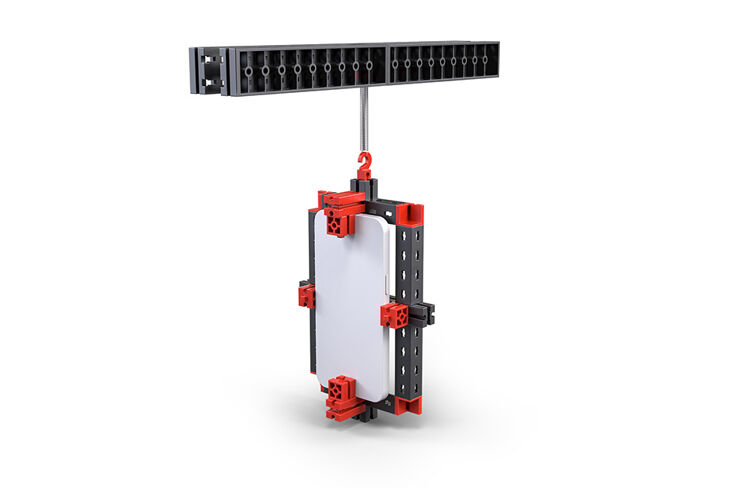
- Products
- Toys
- Schools
- Industry and Universities
- ft Design Studio
- Service
- fischerTiP
The pupils are to build a spring pendulum and examine its characteristics. The intention is to examine the dependence of frequency and mass. The pupils set up a hypothesis which is then either rejected or confirmed by the experiment.
The tasks increase in difficulty. In task 2, the correlation between mass and period is simply examined. In task 3, the equation is to be confirmed and the value for spring constant compared with the individual values (keyword spring analysis).
In addition, scales are required to determine the smartphone weights.
The differential equation can also be derived for sixth form pupils or very advanced pupils.

The pupils
About 15min are needed to build the pendulum.
The subsequent processing of the tasks can be done in 30 minutes. Task 2 can be solved within 30 minutes. Here, the time taken is determined mainly by the number of different lengths and masses. If the results are to be quantified and the equation confirmed, a further 25min should be taken into account.